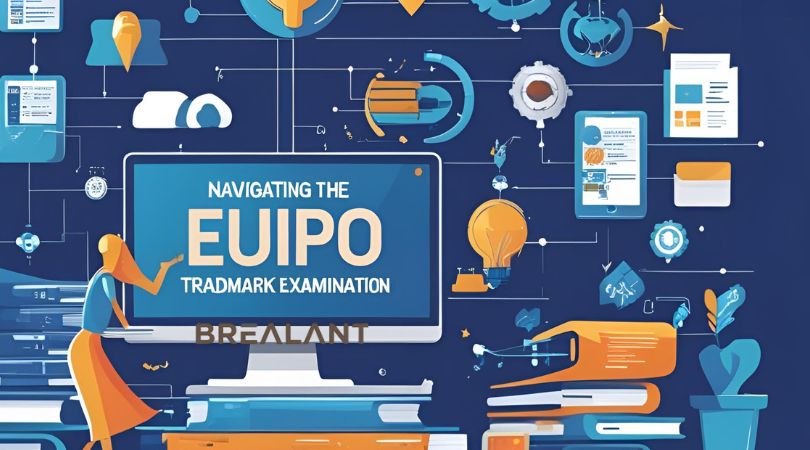Obtaining a trademark in the European Union is a strategic move to protect your brand and intellectual property. The European Union Intellectual Property Office (EUIPO) is the authority responsible for registering trademarks within the EU. While the EUIPO trademark registration process is generally straightforward, there are common pitfalls that applicants may encounter. In this blog post, we will explore these pitfalls and provide valuable tips on how to navigate the EUIPO trademark examination successfully.
Understanding the EUIPO Trademark Examination
Obtaining a registered trademark through the European Union Intellectual Property Office (EUIPO) is a crucial step in protecting your brand within the European Union. Before delving into the common pitfalls and tips, it’s essential to have a basic understanding of the EUIPO trademark examination process. When you apply for a trademark in the EU, your application goes through several stages, including filing, examination, publication, and registration. The examination phase is crucial as it determines whether your trademark meets the requirements for registration.
Common Pitfalls in EUIPO Trademark Examination
- Lack of Distinctiveness: One of the most common reasons for trademark application rejection is a lack of distinctiveness. Your trademark should be able to distinguish your goods or services from others in the market. Marks that are too generic, descriptive, or commonly used can face challenges during examination.
- Similarity to Existing Marks: The EUIPO will conduct a thorough search to ensure that your proposed trademark does not conflict with existing registrations. If your mark is similar to another registered trademark for related goods or services, your application may be rejected.
- Misleading or Deceptive Marks: Trademarks that may deceive or mislead consumers about the nature, quality, or geographical origin of the goods or services they represent are generally not accepted.
- Offensive or Immoral Marks: Marks that are offensive, immoral, or contrary to public policy will be rejected by the EUIPO. This includes trademarks that promote hate speech, discrimination, or other harmful content.
- Filing Incorrectly: Filling out the application incorrectly, including errors in the classification of goods or services, can lead to complications and potential rejection. Precise and accurate information is crucial.
- Missing or Inadequate Documentation: Some applications may be rejected due to missing or insufficient documentation. It’s essential to provide all required supporting materials and evidence to substantiate your application.
Tips for Navigating EUIPO Trademark Examination
- Conduct a Comprehensive Search: Before applying for a trademark, conduct a thorough search to ensure your proposed mark does not conflict with existing registrations. You can use EUIPO’s online tools or consult with a trademark attorney for professional guidance.
- Choose a Distinctive Mark: To increase your chances of approval, opt for a distinctive and unique mark that is not generic or overly descriptive. A strong trademark is more likely to pass the examination process.
- Seek Legal Assistance: Consider consulting with a trademark attorney who specializes in EU trademark law. They can provide valuable guidance, conduct searches, and assist you in preparing a strong application.
- Carefully Craft Your Description: When describing the goods or services associated with your trademark, be precise and accurate. Misclassification can lead to complications during examination.
- Provide Sufficient Documentation: Ensure you include all necessary documentation and evidence to support your application. This may include proof of use, if applicable.
- Address Office Actions Promptly: If the EUIPO requests additional information or raises concerns about your application, respond promptly. Ignoring office actions can lead to the rejection of your application.
- Be Prepared for Opposition: Even if your application passes the examination phase, it may still face opposition from third parties. Be prepared to defend your trademark and respond to any opposition claims.
- Monitor Your Trademark: Once your trademark is registered, it’s essential to monitor it and take action against any potential infringement actively. The EUIPO does not actively police or enforce trademarks, so it’s up to trademark owners to protect their rights.
Conclusion
Navigating the EUIPO trademark examination process requires careful planning, attention to detail, and a clear understanding of the common pitfalls that applicants may encounter. To increase your chances of successfully registering your trademark in the European Union, it’s crucial to choose a distinctive and unique mark, conduct comprehensive searches, and provide accurate documentation.
Seeking legal guidance from a trademark attorney who is well-versed in EU trademark law can be immensely valuable in avoiding common pitfalls and ensuring a smooth trademark registration process. By adhering to the key considerations outlined in this article, you can lay a strong foundation for brand protection and recognition in the European Union. Conducting a comprehensive search and consulting with a trademark attorney can help you make an informed decision and navigate the registration process effectively. When it comes to trademark and intellectual property aspects, Brealant comes into the picture. The firm is prominent all around the world when it comes to trademark application and examination process. Get the best professional advice and comprehensive approach for trademarking your creation with Brealant.








